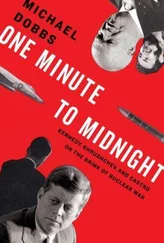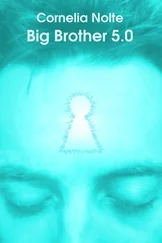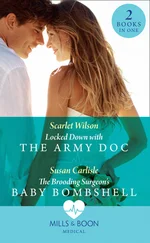During the 1979 pilgrimage John Paul had spoken in a voice that was simple and direct, quite unlike the voice of the Communist regime. He talked of the thirty-five-year Communist experience as a transitory phenomenon, insignificant in comparison with Poland’s thousand-year devotion to the Roman Catholic Church. It was a message that came across clearly on the first day of the visit, in Warsaw’s Victory Square, when the pope attacked the state for attempting to create an atheistic society. “Christ cannot be kept out of the history of man in any part of the globe,” he had thundered. The crowd greeted his words with a ten-minute burst of applause, ending with rhythmic chants of “We want God, we want God.” 182
From that moment onward, Karol Wojtyła became the uncrowned king of Poland.
During his weeklong tour of Poland the pope had elaborated on one of his favorite themes, the spiritual unity of Europe. He saw his beloved Kraków as part of a European-wide civilization, in which political boundaries were more or less irrelevant. In Wojtyła’s Europe, the Europe of 966, when Poland was first converted to Christianity, there was no Iron Curtain and no Berlin Wall. Priests, scholars, and ideas traveled freely from one town to another. The pope was convinced that his election was God’s way of reminding Western Europe that Poles, Czechs, Slovaks, Croats, Serbs, Bulgars, and even Russians were also part of a much broader Christian civilization.
Born in 1920, the year Poland defeated Soviet Russia in the “Miracle on the Vistula,” Karol Wojtyła had firsthand experience of family tragedy, backbreaking labor, and political oppression. He had scarcely known his mother, a schoolteacher, who died when he was only six, while giving birth to a stillborn girl. His father, who had served in the Austro-Hungarian army, was killed in the opening year of World War II. “At the age of twenty,” Wojtyła later recalled, “I had already lost all the people I loved and even the ones I might have loved, such as my big sister who had died, I was told, six years before my birth.” 183Psychologists have speculated that the future pope sought compensation for the maternal love he never received in the Marian cult of the Black Madonna.
As a theological student in Kraków Wojtyła experienced the terror of German occupation. A particularly brutal Nazi gauleiter, Hans Frank, installed himself in the royal Wawel Castle with orders from Hitler to treat the Poles as a slave race. “The standard of living in Poland must be kept low,” Hitler instructed. “The priests will preach what we want them to preach. Their task is to keep the Poles quiet, stupid, and dull-witted.” 184Wojtyła saw Kraków Jews being taken to the death camp at Auschwitz, just a few miles down the road. Polish intellectuals were disposed of in a similar fashion. The Germans put Wojtyła to work, first in a stone quarry and later carrying buckets of lime in a water purification plant. On the night of August 6, 1944, the Gestapo arrested all Polish males between the age of fifteen and fifty in retaliation for the Warsaw uprising. Had they found Wojtyła, they would probably have killed him. Fortunately for the young theologian, he was given shelter by the archbishop of Kraków, Prince Adam Sapieha.
Wojtyła lived in the residence on Franciscan Street, off and on, for nearly fifteen years, as both student and archbishop. When he returned in June 1983, as pope, it was as if he were coming home. He greeted the nuns by name and sang and joked with the thousands of young people who waited to greet him in the street outside. “Holy Father, we trust you,” they chanted. “Save Poland.”
On the last full day of his visit the pope said mass on the Błonie, the vast meadow in front of Wawel Castle. Banners reading “Solidarity Lives” and “There Is No Freedom Without Solidarity” fluttered above the crowd of two million people. Alluding to Jaruzelski’s imposition of martial law, the pope urged his listeners never to give up. The nation had been “called to victory,” he declared.
As he said these words, two million people raised their hands silently in the air in the V for victory sign. An underground Solidarity leader, Eugeniusz Szumiejko, who had managed to escape the police roundup, was standing at the back of the huge throng, on top of an embankment. All of a sudden he saw a sea of black heads submerged in a wave of white fists. 185It was an awe-inspiring sight, proof that Jaruzelski had been unable to crush the spirit that had given birth to Solidarity. At the end of the mass a large chunk of the crowd set off on foot for Nowa Huta, beneath their Solidarity banners, to see the pope consecrate a new church.
“ Khodz z namy, ” they chanted, the battle cry of 1970 and 1980. “Come with us. There will be no beatings today.”
When they reached the site of the new church, they joined a congregation of a quarter of a million people. The entire population of the “city without God” had turned out to greet the pope. Here was proof that history could not be reversed by tanks, internment camps, and corrugated iron fences, that martial law too would pass, and that Nowa Huta’s two-story monument to the founder of world communism would one day come down.
THE KREMLIN GREETED THE NEWS of Pope John Paul’s triumphant return to his homeland with ill-concealed fury. The Soviet mass media accused Polish priests of inciting parishioners to acts of “political hooliganism” and inspiring “counterrevolutionary disturbances.” Soviet leaders urged their Polish counterparts to crack down hard on the “reactionary” wing of the Catholic Church.
“The Polish Communist Party isn’t putting much effort into the struggle with the church,” Gromyko, the Soviet foreign minister, complained to his Politburo colleagues. “Things have reached the point when thousands upon thousands of people are crawling on their knees before the Roman pope.” 186
Jaruzelski resisted Moscow’s advice to crack down on the church. He tried to explain that he needed the church as an “ally” in his campaign to ensure peace and quiet in Poland and regain respectability at home and abroad. The Kremlin potentates remained hostile. Their suspicions were voiced by the youngest member of the Politburo, who presented himself as an ardent believer in the monotheistic faith of communism. “Jaruzelski is trying to paint the situation in rosy colors,” he told his colleagues. “We must clarify his real intentions. We must find out whether he wants to introduce a pluralistic system of government in Poland.” 187
Such were the views of Mikhail Sergeyevich Gorbachev a year before he became general secretary of the Communist Party of the Soviet Union.
II. REVOLT OF THE MACHINES
In Poland, in August 1980, it was human beings who went on strike. In the Soviet Union, we are witnessing a strike of inanimate objects.
Adam Michnik
All that is human must retrograde if it does not advance.
Edward Gibbon,
Decline and Fall of the Roman Empire
SAKHALIN ISLAND
September 1, 1983
AFTER RONALD REAGAN’S ELECTION as fortieth president of the United States, the Pentagon began publishing annual reports on the Soviet military threat. Packed with color illustrations of missiles that could hit New York and Los Angeles, charts depicting the growing Warsaw Pact advantage in tanks and men under arms, and grainy photographs of nuclear submarines, the glossy brochures portrayed a world in which the balance of power was shifting inexorably in favor of the Communist superpower. With each edition of Soviet Military Power , an ever greater proportion of the earth’s surface was daubed in red. Sinister red arrows reached out across the world’s major sea-lanes, showing the Kremlin straining to achieve the goal of a thousand-ship navy. Much of Asia, Africa, and Latin America was covered with blotches and symbols denoting the presence of Soviet, Cuban, or East German military advisers. No part of the globe, not even the United States, seemed entirely safe from the encroaching Red menace.
Читать дальше












